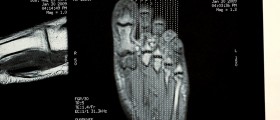
Juvenile Diabetes: How To Recognize Type 1 Diabetes In Children?
Juvenile diabetes refers to when diabetes develops in children. This article describes how to recognize when diabetes develops in children.

Diabetes Insipidus: Causes, Symptoms, Diagnosis, And Treatment
One less well-know type of diabetes is known as diabetes insipidus. This article outlines the cause, symptoms, diagnosis and treatment of diabetes insipidus.

Recommendations From A Pediatric Dentist: 5 Childhood Nutrition Tips To Promote Strong Teeth
Eating right and getting the nutrition the body needs can play a huge role in the formation and development of strong teeth. Here are some food choices that will give your teeth the best chance to remain strong and disease-free.

8 Things You Didn't Know About Irregular Heartbeat (Arrhythmia) And Atrial Fibrillation, But Should
Arrhythmia is one of the most deadly groups of conditions in the world, but there's a good chance you don't know much about it. Finding the condition too late can be fatal in the wrong situation, so it's important for everyone to know about.

9 Asthma Risk Factors: What Puts People At Risk?
Asthma is a great burden of modern society. Although in some countries its prevalence dropped during the past decade, the data are still inconsistent. Both genetic and environmental risk factors play important roles in asthma development.

Definite and Inconclusive Risk Factors for Pediatric Leukemia
Leukemia is the most common cancer in pediatric patients. There are many known risk factors that are associated with leukemia in children. Genetics and exposure to radiation are the most well-established risk factors for the development of leukemia.

Acute Lymphocytic Leukemia in Children: Conventional Treatment
Leukemia makes up about 33% of all childhood cancers. The conventional way to treat ALL is through chemotherapy, which is conducted in three phases: induction, consolidation and maintenance, and leads to a survival rate of 85%.

Morton's Neuroma: Symptoms & Treatment
A neuroma is a thickening of nerve tissue. This problem may develop in various parts of the body. The most common neuroma in the foot is a Morton’s neuroma. It occurs at the base of the third and fourth toe.

Steroid-Induced Diabetes: How Can Steroid Use Affect Your Blood Sugar Levels?
People that have risk factors associated with type 2 diabetes and that are prescribed steroids as medication are at a high risk for developing steroid-induced diabetes. This article outlines everything you should know about steroid-induced diabetes.

Brittle Diabetes (Labile Diabetes): What Happens When Type 1 Diabetes Becomes Hard To Control?
Brittle diabetes is a severe form of type 1 diabetes. This article outlines the risk factors, symptoms and treatment of brittle diabetes.

